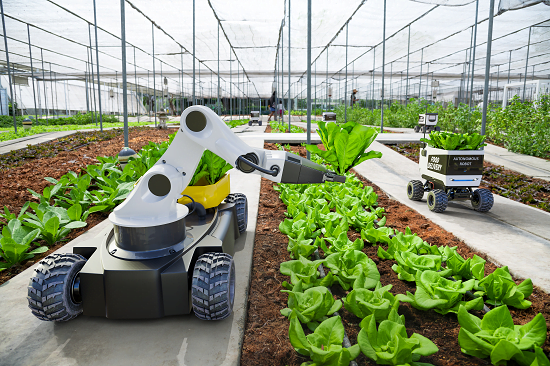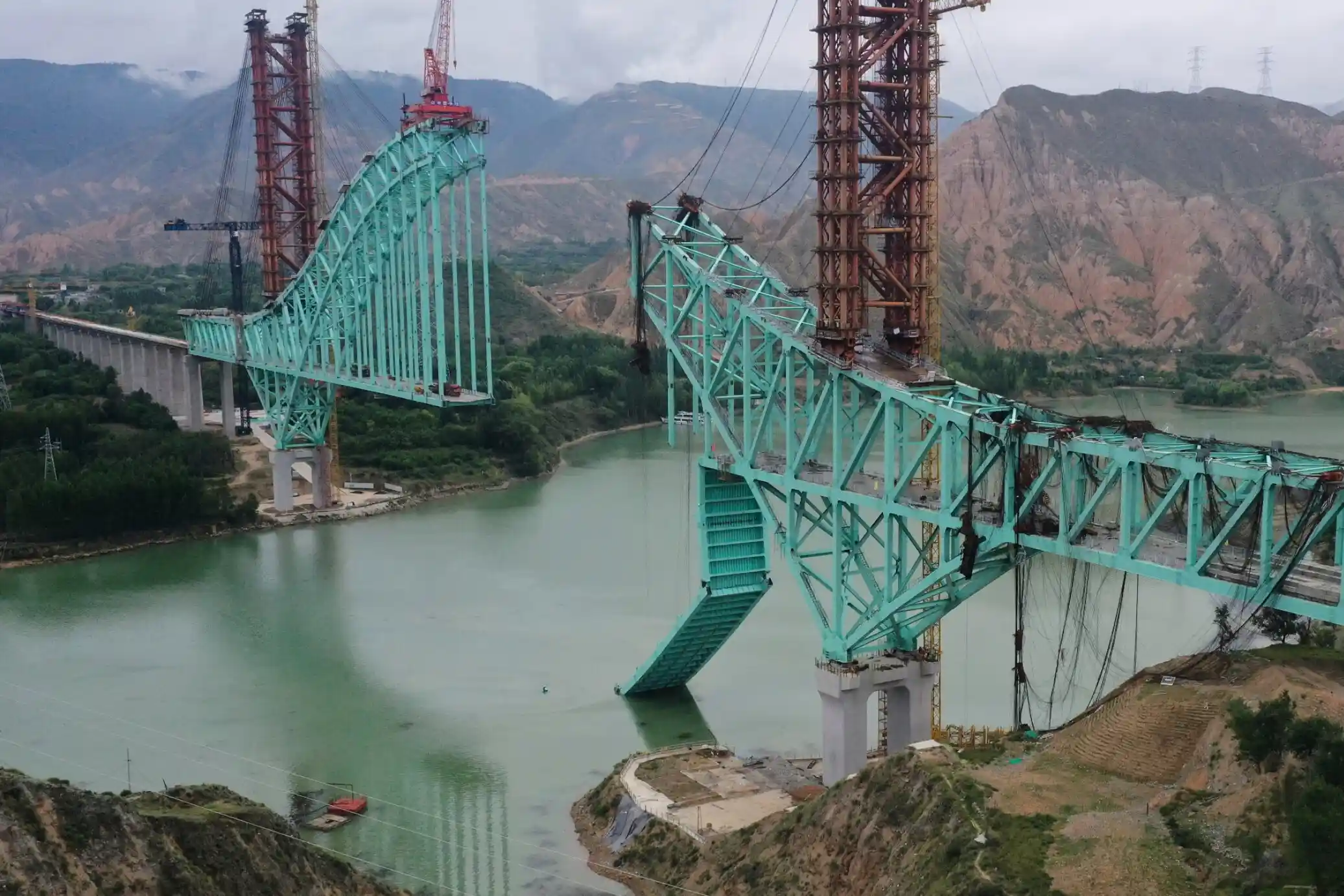Across the globe, farmers are facing a critical challenge: a severe shortage of agricultural labor. Small farms, in particular, struggle the most, as they often cannot compete with large-scale agribusinesses in hiring and retaining seasonal workers. Rising wages, tougher immigration rules, aging rural populations, and the physically demanding nature of farm work have combined to create a crisis.
- The Labor Shortage Crisis in Agriculture
- How AI-Powered Robots Step In
- Precision Planting
- Automated Weeding and Pest Control
- Harvesting Crops with Robotic Hands
- Soil and Crop Monitoring
- Labor Efficiency and Workforce Support
- Reducing Costs and Increasing Profit Margins
- Sustainability and Long-Term Resilience
- Real-World Case Studies
- Expert Opinions
- Challenges and Limitations
- The Future of AI in Farming
- Conclusion
- FAQs
But just as the problem has reached alarming levels, a new solution is emerging: AI-powered robots. These smart machines are stepping into the fields, helping farmers plant, weed, harvest, and even monitor crops with a precision that was unimaginable just a decade ago. Far from being science fiction, AI-driven robots are already transforming agriculture, making it more efficient, resilient, and sustainable.
This article dives deep into how these robots are helping small farms overcome labor shortages, exploring the technologies behind them, real-world examples, economic impacts, and the future they promise.
The Labor Shortage Crisis in Agriculture
To understand the importance of AI-powered robots, we must first look at the labor crisis itself. According to the U.S. Department of Agriculture, nearly 56% of crop farms report difficulty in finding workers during peak seasons. In Europe, similar challenges exist, with countries like Spain and Italy depending heavily on migrant workers whose availability has declined in recent years.
For small farms, this shortage is devastating. Without affordable labor, crops often rot in fields, leading to losses that can push family-run farms out of business. In California’s Central Valley, for example, farmers reported losing millions of dollars in 2023 alone due to unharvested produce.
This is not just a financial problem—it is also a food security issue. As global demand for food is expected to rise by 60% by 2050, the agricultural sector urgently needs scalable solutions.
How AI-Powered Robots Step In
Artificial intelligence gives robots the ability to “see,” “think,” and “act” in complex agricultural environments. Unlike traditional machines that require human operation, AI robots use sensors, cameras, and machine learning algorithms to navigate farms, identify tasks, and perform them independently.
Here are seven ways these robots are addressing labor shortages for small farms:
Precision Planting
Planting seeds evenly and at the right depth is crucial for healthy crop yields. AI-powered robots equipped with GPS and computer vision can plant with millimeter-level precision. Small farms benefit because:
Fewer seeds are wasted.
Crops grow uniformly, making later tasks like weeding and harvesting easier.
Farmers save labor costs by reducing the need for manual planting crews.
A small organic farm in Oregon reported increasing its planting efficiency by 30% after deploying a robotic planter powered by AI.
Automated Weeding and Pest Control
Weeding is one of the most labor-intensive farm tasks. Traditional herbicides are costly and harmful to the environment, but AI robots can now identify weeds and remove them mechanically or with micro-doses of natural sprays.
Robots like “LaserWeeders” use AI to distinguish between crops and weeds, firing precise laser beams to kill the unwanted plants.
This reduces dependence on migrant labor for weeding, which can account for 25% of farm labor hours on small farms.
In addition, AI drones patrol fields to detect pest infestations early, reducing crop loss and minimizing chemical use.
Harvesting Crops with Robotic Hands
Harvesting is the peak labor challenge for farmers. Fruits like strawberries, tomatoes, and apples require delicate handling that machines historically struggled with. Now, AI-powered robotic arms with soft grippers can pick ripe fruits without damaging them.
For example, a farm in Florida reported saving $200,000 in labor costs annually by using AI robotic strawberry pickers.
These robots use computer vision to identify ripeness, reducing waste and ensuring high-quality produce reaches markets.
Soil and Crop Monitoring
AI robots do not just work with their hands—they also serve as “eyes and ears” for farmers. Ground robots and drones collect real-time data on soil moisture, nutrient levels, and crop health. Machine learning models analyze this data, giving farmers actionable insights.
Farmers can then apply water, fertilizer, or treatments only where needed, saving time, money, and resources.
One study found that AI-powered monitoring systems reduced water usage by 20-30% on small farms, an essential benefit in drought-prone areas.
Labor Efficiency and Workforce Support
Instead of replacing human workers entirely, AI robots often work alongside them, improving efficiency.
Robots handle repetitive, backbreaking tasks like weeding or heavy lifting, freeing humans to focus on higher-value activities such as crop planning, marketing, and quality control.
For small farms, this hybrid model means they can employ fewer workers but still manage large outputs.
As one farmer in Spain put it: “The robots don’t replace us—they help us survive.”
Reducing Costs and Increasing Profit Margins
For small farms, financial survival depends on reducing input costs while maintaining output.
By cutting reliance on seasonal labor, robots help stabilize farm budgets.
AI-driven machines work around the clock, without breaks or overtime pay, providing consistent productivity.
An economic analysis from the University of Illinois estimated that farms adopting AI robots could see profit margins increase by 15-20% within the first five years.
Sustainability and Long-Term Resilience
Finally, AI-powered robots are enabling small farms to adopt more sustainable practices. Precision agriculture reduces pesticide use, optimizes irrigation, and lowers carbon footprints. With climate change disrupting traditional farming patterns, resilience is critical.
These robots also make farming more attractive to younger generations who may be more drawn to high-tech agriculture than to traditional manual labor.
Real-World Case Studies
Japan’s Strawberry Farms
Facing an aging workforce, Japanese strawberry farms have widely adopted AI-powered harvesting robots. These machines identify ripe berries with 95% accuracy and pick them gently, ensuring quality for export markets.
California’s Lettuce Growers
In Salinas Valley, lettuce farmers use AI robotic weeders that reduce herbicide use by 90% while cutting labor costs. Farmers report that without these robots, many crops would go unharvested due to labor shortages.
India’s Smallholder Farms
In India, startups are developing affordable AI-enabled drones for crop monitoring. These low-cost technologies help farmers with less than five acres of land improve yields by up to 25%.
Expert Opinions
Dr. Maria Sanchez, an agricultural economist, explains: “AI robots are not about replacing humans but ensuring farms can stay productive when workers are scarce. They give small farms a fighting chance in a global food system dominated by large corporations.”
Similarly, Professor Li Wei from Beijing Agricultural University notes: “By combining robotics with AI, we’re seeing a new model of farming that is more precise, sustainable, and scalable.”
Challenges and Limitations
While AI-powered robots offer great promise, they are not a perfect solution.
High Initial Costs: Many small farms cannot afford the upfront investment without subsidies or cooperatives.
Technical Training: Farmers must learn how to maintain and operate these machines.
Job Concerns: Some fear that widespread adoption may reduce opportunities for rural workers.
However, as technology becomes cheaper and more accessible, these barriers are expected to diminish.
The Future of AI in Farming
The global agricultural robotics market is projected to grow from $13 billion in 2023 to over $40 billion by 2030. For small farms, this means AI-powered robots will become more affordable, customizable, and essential.
Future innovations may include:
- Swarm robotics for collective weeding and planting.
- AI systems that predict market demand to guide planting decisions.
- Fully autonomous farms operated with minimal human intervention.
The vision is not just about efficiency—it is about creating a resilient food system where even the smallest farms thrive.
Conclusion
The agricultural labor shortage is one of the greatest challenges of our time, threatening food security and the survival of small farms. Yet, in this crisis lies an opportunity. AI-powered robots are proving to be the lifeline that small farms need, offering solutions for planting, weeding, harvesting, and monitoring that were once unimaginable.
By reducing reliance on scarce labor, cutting costs, and promoting sustainable practices, these intelligent machines are not only addressing immediate problems but also shaping the future of farming. While challenges remain, the direction is clear: the farms of tomorrow will be smart, efficient, and resilient—powered by AI.
FAQs
Are AI-powered robots too expensive for small farms?
Initially, yes, but costs are falling rapidly. Leasing options, government subsidies, and cooperatives make them increasingly affordable for small farmers.
Do AI robots completely replace human workers?
Not entirely. They often complement human labor by handling repetitive tasks, allowing workers to focus on higher-level farm management.
What crops benefit most from AI harvesting robots?
Fruits and vegetables that require delicate handling—such as strawberries, tomatoes, apples, and lettuce—are the primary focus.
How do AI robots promote sustainability?
By reducing chemical use, optimizing water consumption, and lowering energy waste, AI robots make farming more environmentally friendly.
Will AI-powered farming become mainstream worldwide?
Yes. As technology becomes cheaper and more adaptable, AI-powered robots are expected to become a standard part of farming, from large agribusinesses to smallholder farms.






